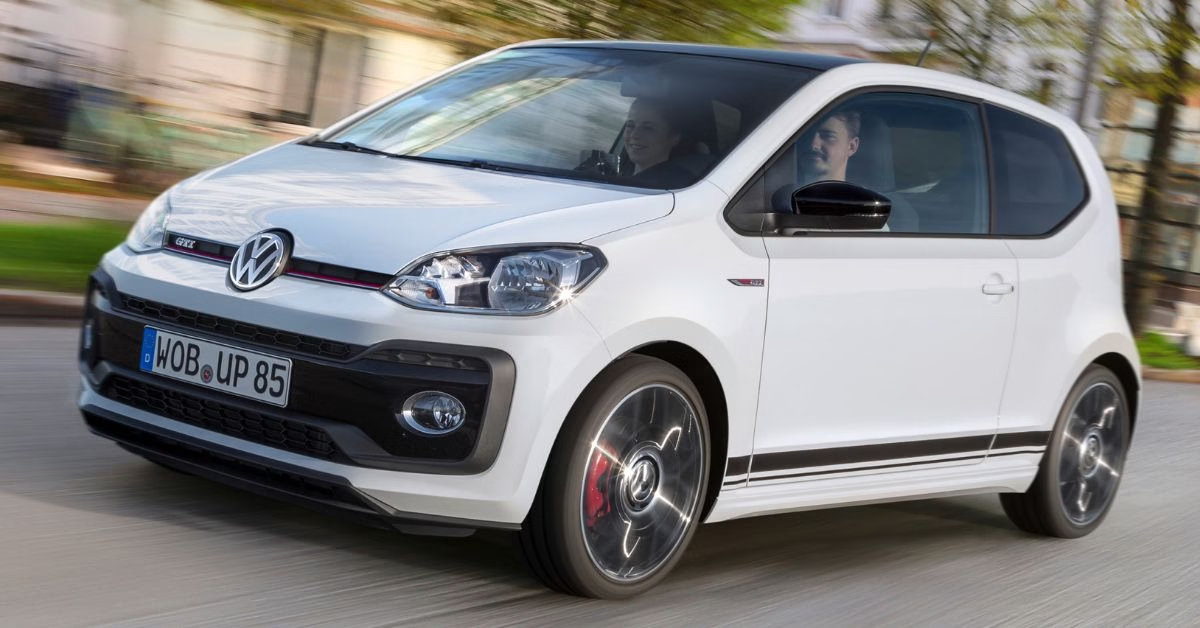Car insurance is notoriously expensive for young drivers, especially those just starting out at 17 or 18. With premiums often higher than the value of the car itself, choosing the right vehicle can make all the difference. That’s where insurance groups come in.
In the UK, every car falls into an insurance group ranging from 1 (the cheapest to insure) to 50 (the most expensive). For first-time drivers, those in groups 1 to 4 offer the best chance of keeping premiums low without compromising safety, reliability, or comfort.
This guide breaks down the cheapest cars to insure in the UK in 2025, including practical city cars, compact hatchbacks, and no-frills budget models that tick the boxes for affordability and ease of use. Whether you’re a new driver or looking for the cheapest car to insure at 17, this list highlights some excellent options based on real-world insurance premiums, running costs, and availability on the UK market.
10. Hyundai i10
Estimated Premium (17–20 y/o): £900–£1,100/year
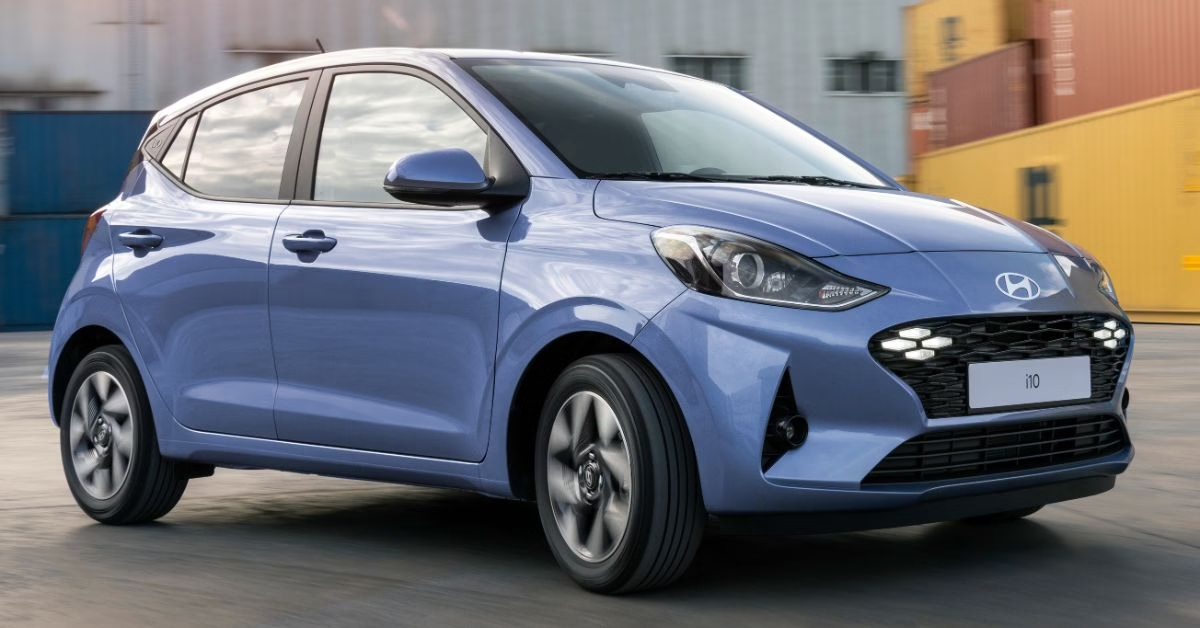
The Hyundai i10 has long been a favourite among new drivers, and for good reason. In its 1.0 SE trim, it sits in the lowest insurance group possible, making it one of the cheapest cars to insure in the UK. The compact engine keeps power output modest (67 hp), which insurers like, but it still feels lively enough for urban driving.
Despite being a budget-friendly option, the i10 doesn’t feel cheap inside. It comes with air con, electric windows, and smartphone connectivity as standard in most modern versions. It also scored well in Euro NCAP safety ratings thanks to its solid chassis and standard stability control. In addition, the i10 also boasts an impressive WLTP fuel economy rating of 55 – 60 mpg.
9. Volkswagen Up!
Estimated Premium (17–20 y/o): £950–£1,200/year
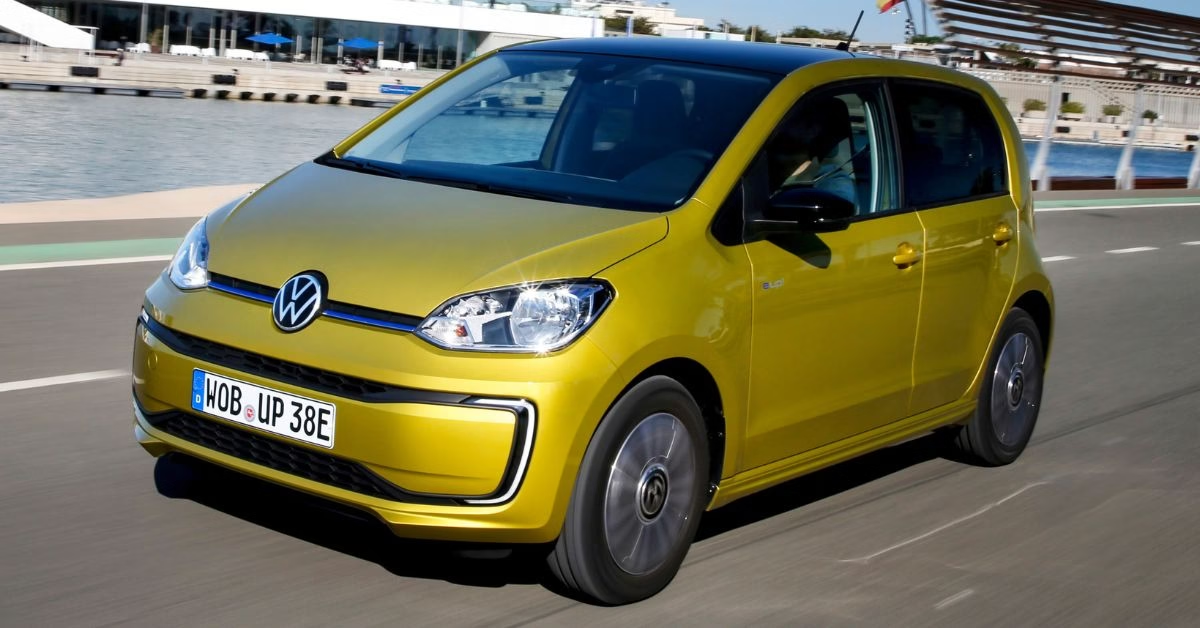
The Volkswagen Up! is one of the smartest city cars you can buy as a new or young driver, and it’s not alone. It shares its platform and drivetrain with the SEAT Mii and Škoda Citigo, which means all three cars benefit from the same clever engineering, compact dimensions, and low running costs. Whichever badge you choose, you’re getting one of the cheapest cars to insure in the UK.
In its basic Take Up! trim, the Up! comes with a 1.0-litre petrol engine producing 60 hp. It won’t win any drag races, but it’s perfectly suited for city commuting, with nippy acceleration at low speeds and excellent fuel economy, regularly exceeding 55 mpg in mixed driving. Its front-wheel-drive setup, short wheelbase, and feather-light steering make it a breeze to park and drive confidently, even for beginners.
Where the Up! edges out its siblings is in refinement and perceived quality. The interior feels a notch above the Mii or Citigo, with VW’s clean design and solid build. Entry-level trims are simple but functional, and higher trims add features like smartphone integration, heated seats, and more.
8. Citroën C1
Estimated Premium (17–20 y/o): £1,000–£1,300/year
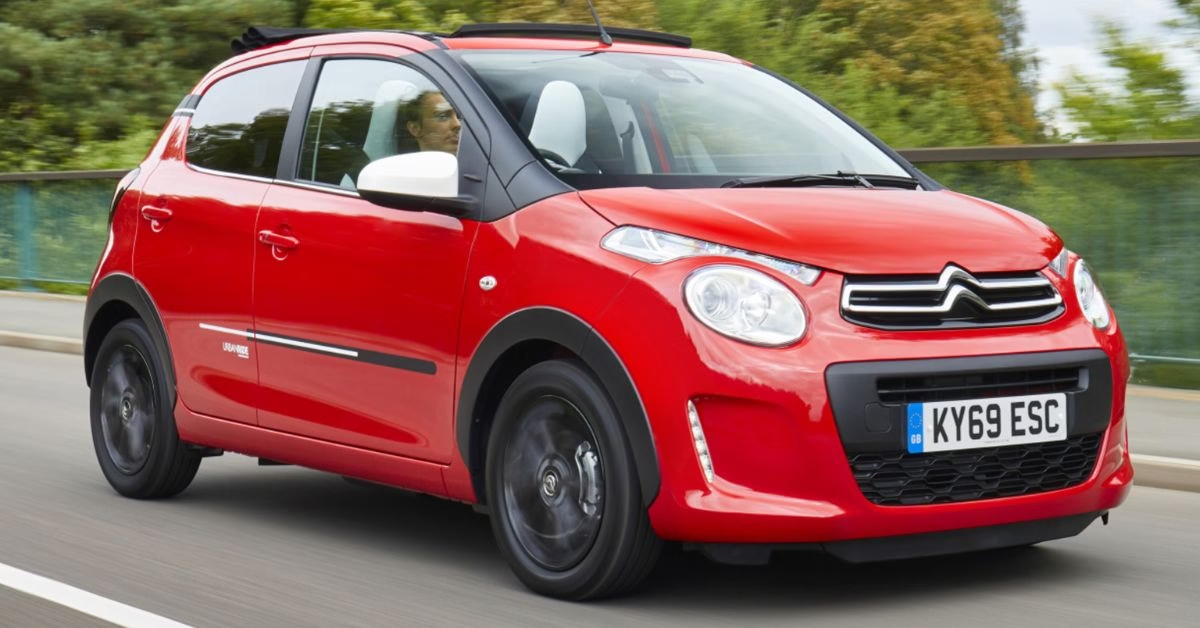
The Citroën C1 offers a splash of French flair in the budget city car class. While it shares some components with the Toyota Aygo and Peugeot 108, the C1 stands out for its quirky design, distinctive front end, and ultra-compact footprint — all of which make it ideal for urban environments and tight parking.
Powered by a 1.0-litre petrol engine producing 72 hp, the C1 feels more responsive than its specs suggest, especially around town. Its low kerb weight and tight steering make it easy to dart through traffic, while front-wheel drive gives it predictable grip in poor weather.
What really sets the C1 apart is its exceptional fuel economy, with WLTP figures topping 60+ mpg. The minimalist design and cheap-to-replace parts help keep insurance costs low, which is why it comfortably sits in Group 1.
7. Peugeot 107
Estimated Premium (17–20 y/o): £1,000–£1,300/year
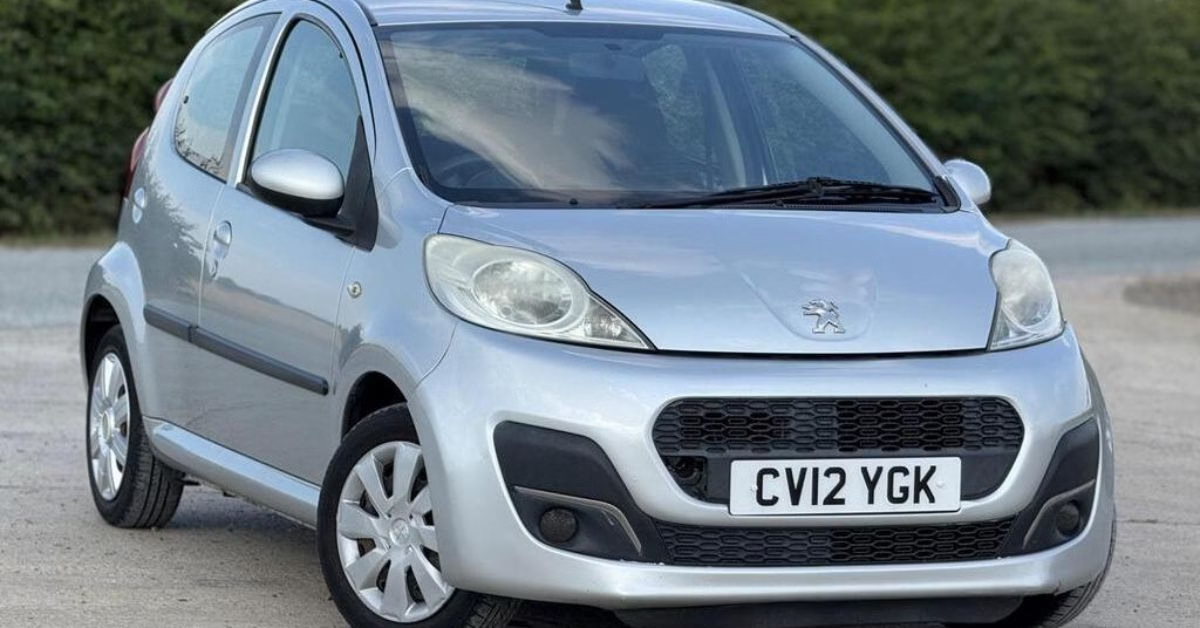
The Peugeot 107 is one of the original members of the Toyota-Peugeot-Citroën city car trio, and while it shares its bones with the Citroën C1 and Toyota Aygo, it’s developed a reputation of its own as a reliable, easy-to-insure first car.
Its 1.0-litre petrol engine produces 68 horsepower — modest, but more than enough for city commuting and suburban journeys. Performance is sprightly at low speeds, thanks to the car’s tiny weight and short gearing. The front-wheel-drive layout, compact dimensions, and great visibility make it ideal for learners or drivers who’ve just passed their test.
Where it really wins, though, is at the pump. The 107 sips fuel lightly, often returning 60+ mpg, and maintenance is cheap thanks to widely available parts and simple mechanicals. These qualities help keep insurance group ratings low, which is why the 107 lands firmly in Group 1, especially for older trims like the Urban Lite.
Suggested:
6. Ford Ka+
Estimated Premium (17–20 y/o): £1,050–£1,350/year
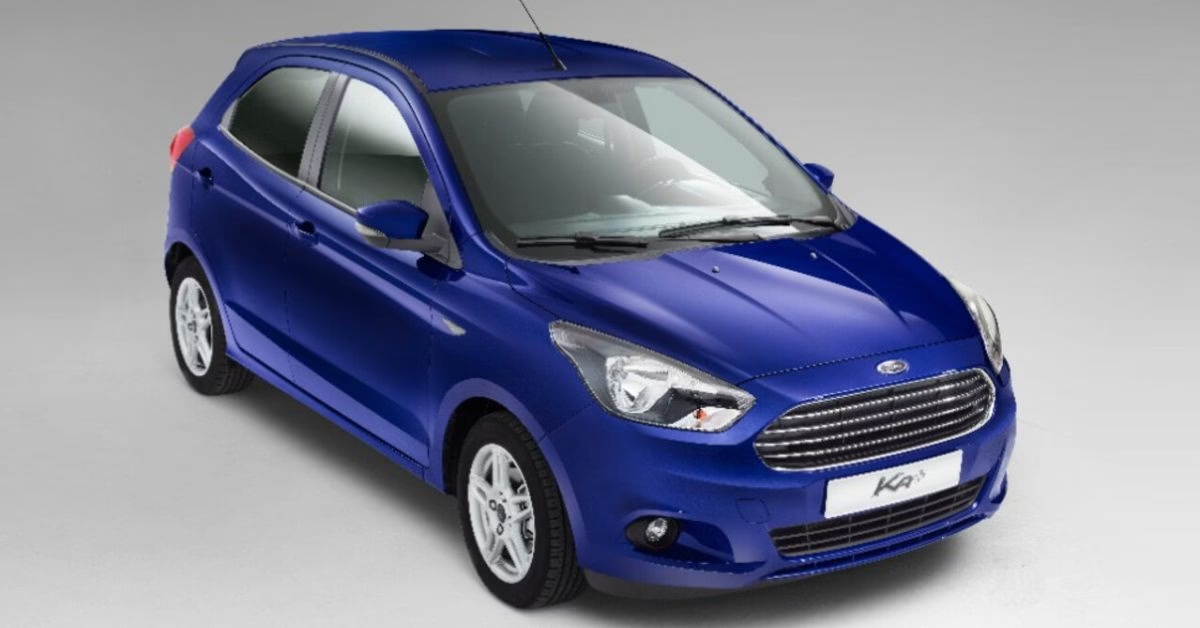
The Ford Ka+ is a slightly larger and more practical evolution of the original Ka, with five doors, a bigger boot, and better ride quality. Even with the size upgrade, it remains one of the cheapest cars to insure in the UK, especially in entry-level Studio and Zetec trims.
Under the bonnet is a 1.2-litre naturally aspirated engine producing 70 hp. While it’s not the quickest in its class, it’s smooth and dependable, ideal for low-stress commuting or learning to drive. The soft suspension and light steering give it a more mature, comfortable feel than many city cars, while the front-wheel-drive setup makes it easy to handle in all weather.
It’s slightly higher fuel consumption than 1.0-litre rivals is balanced out by lower purchase prices and strong reliability, especially if buying used. Insurance remains low due to its modest power, excellent crash performance, and widespread availability of parts.
5. Fiat Panda
Estimated Premium (17–20 y/o): £1,050–£1,400/year
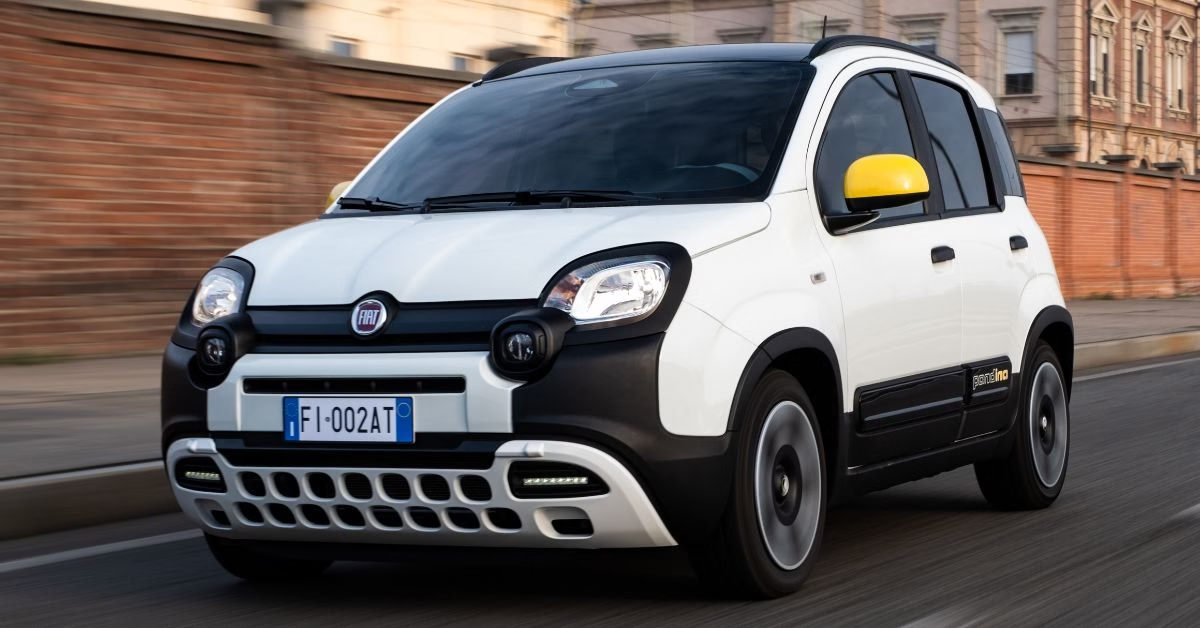
The Fiat Panda isn’t the flashiest car on this list, but it’s one of the most practical — and perhaps the most underrated. It’s been a favourite in mainland Europe for decades, thanks to its upright design, dependable engines, and ultra-low running costs. And in the UK, it quietly remains a smart pick for young drivers looking for something cheap to insure and easy to live with.
Early Pop trims came with a 1.1L engine producing around 54 hp, while newer 1.2L Easy versions bump power to 69 hp. Neither is fast — and that’s the point. These engines are designed for simplicity, reliability, and economy. Fuel economy hovers just under 60 mpg, and the Panda’s lightweight design makes it feel nippy around town, despite the modest figures.
Thanks to its boxy shape and tall windows, visibility is excellent, perfect for learners and new drivers who don’t yet have a sixth sense for parking. Its FWD setup and raised ride height make it well-suited for bumpy rural roads as well as urban commutes.
Suggested:
4. Nissan Micra
Estimated Premium (17–20 y/o): £1,100–£1,400/year
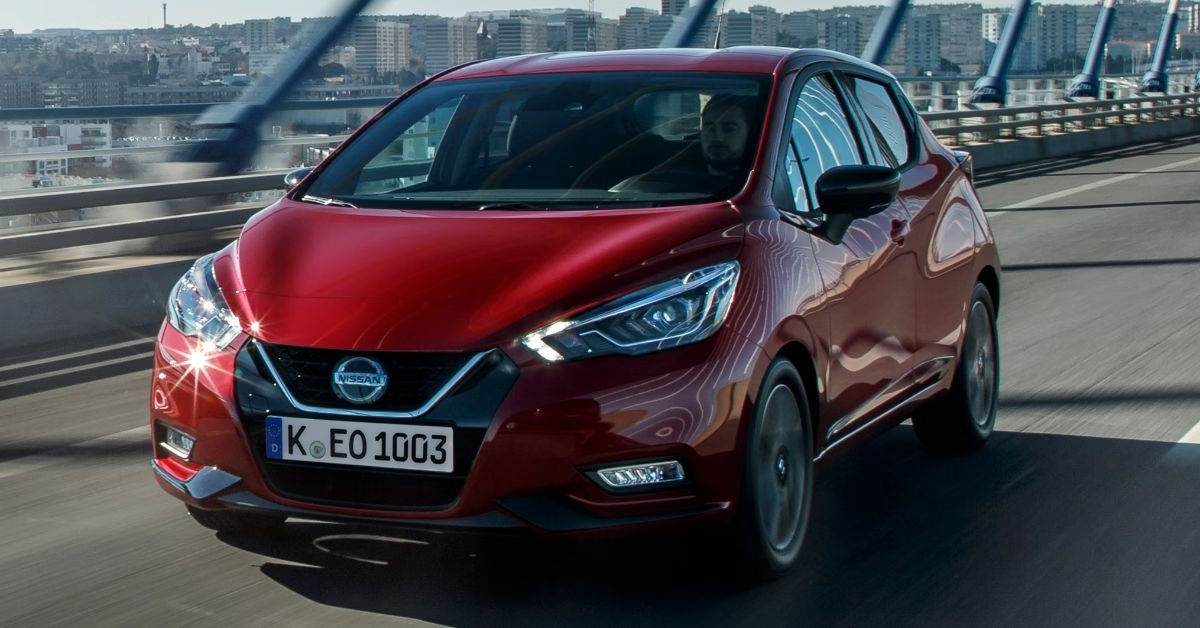
The Nissan Micra has been a go-to first car in the UK for decades — and in its more basic trims, it still delivers on the essentials: reliability, low running costs, and rock-bottom insurance premiums. The fifth-generation Micra brought a big leap forward in design, but even earlier models remain excellent for budget-conscious drivers.
The Visia trim comes with a 1.0-litre petrol engine pushing 71 hp, which is enough for short motorway runs and daily errands. Performance is modest, but fuel economy is solid, and it’s one of the few small cars that feels planted and stable at higher speeds, even in entry-level form. The front-wheel-drive layout and light steering make it easy to manoeuvre — a big plus for learners and newly licensed drivers.
The cabin isn’t flashy, especially in Visia trim, but it’s durable and straightforward. Visibility is decent, and newer Micras also include safety tech like lane departure warning and autonomous emergency braking, rare for a car in this insurance group.
3. Toyota Aygo
Estimated Premium (17–20 y/o): £1,100–£1,450/year
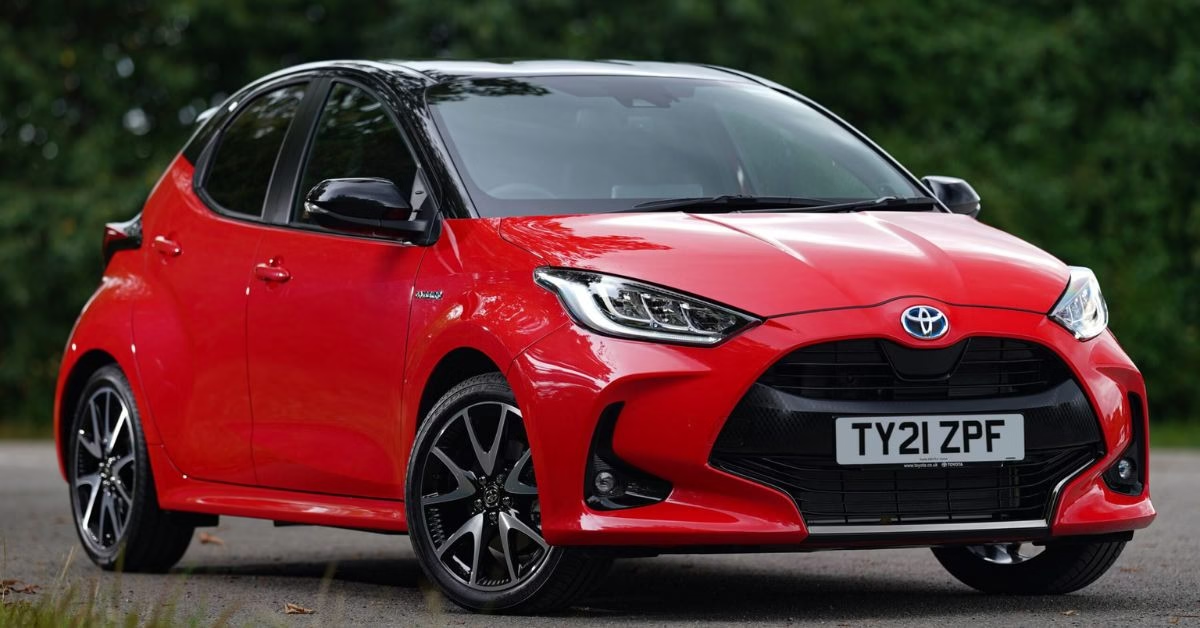
The Toyota Aygo blends ultra-low running costs with an edgy, youthful design — perfect for first-time drivers who want their first car to have a bit of personality. It’s mechanically identical to the Citroën C1 and Peugeot 108, but Toyota’s reputation for reliability gives it an edge in long-term ownership appeal.
Under the bonnet is a 1.0-litre VVT-i petrol engine producing 72 hp. It’s a rev-happy, characterful little unit that makes the Aygo feel fun around town without ever being too powerful for a novice driver. Despite its modest engine size, it’s one of the quicker cars in this insurance group, and it delivers impressive fuel economy — over 60 mpg in mixed driving is common.
The Aygo’s front-wheel-drive chassis, short wheelbase, and ultra-light weight make it nimble and effortless to park. Most trims include key safety features like ABS, stability control, and even hill-start assist. Newer models (post-2018) may also feature optional tech like a reversing camera and lane departure alert, all while remaining in Insurance Group 1 or 2.
2. Kia Picanto
Estimated Premium (17–20 y/o): £1,150–£1,500/year
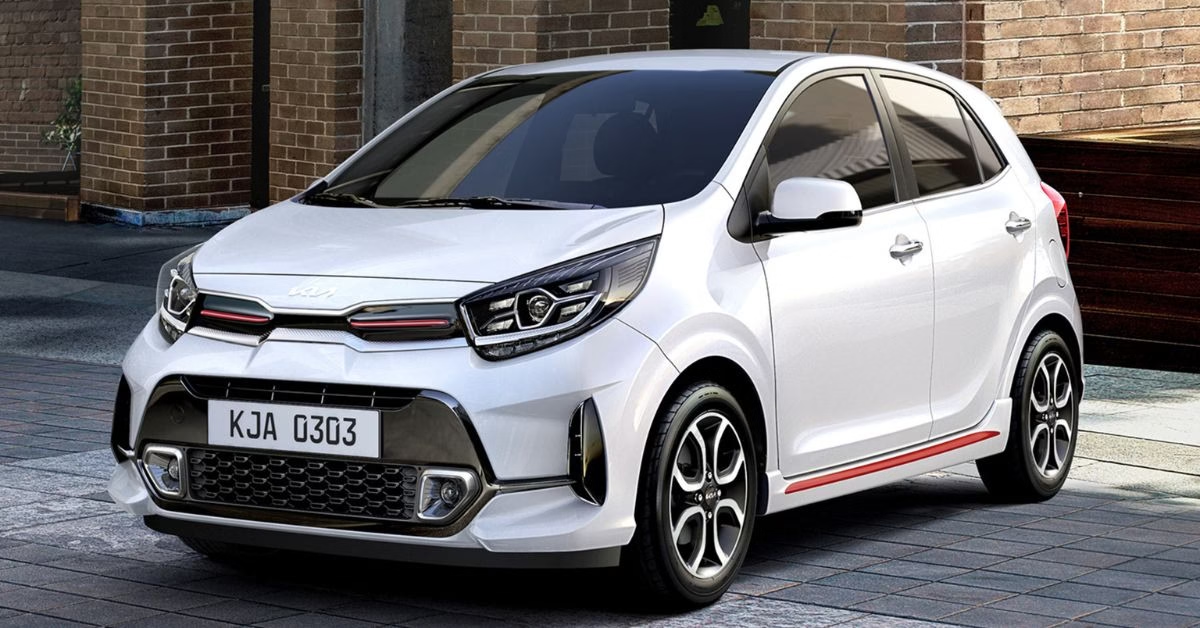
The Kia Picanto is one of the most polished city cars available to young UK drivers — and in its lower trims like 1 Air or 2, it combines smart styling, a refined interior, and rock-bottom insurance costs. With a small footprint, frugal engine, and solid safety features, the Picanto has grown into a mature and desirable option for first-time buyers.
The 1.0-litre engine produces just under 67 hp, which gives it enough zip for city streets and short motorway trips without ever feeling overwhelming. The car’s light chassis and tight turning radius make it easy to handle in traffic, while front-wheel drive keeps things predictable and confidence-inspiring in all conditions.
Fuel economy is solid, with most drivers seeing real-world figures around 55 mpg. And thanks to Kia’s famously long warranties (up to 7 years from new), even older used models retain excellent value and peace of mind. It’s no surprise insurers view the Picanto as low-risk, making it a strong pick for young drivers looking for a balance of economy and usability.
1. Ford Fiesta
Estimated Premium (17–20 y/o): £1,150–£1,600/year
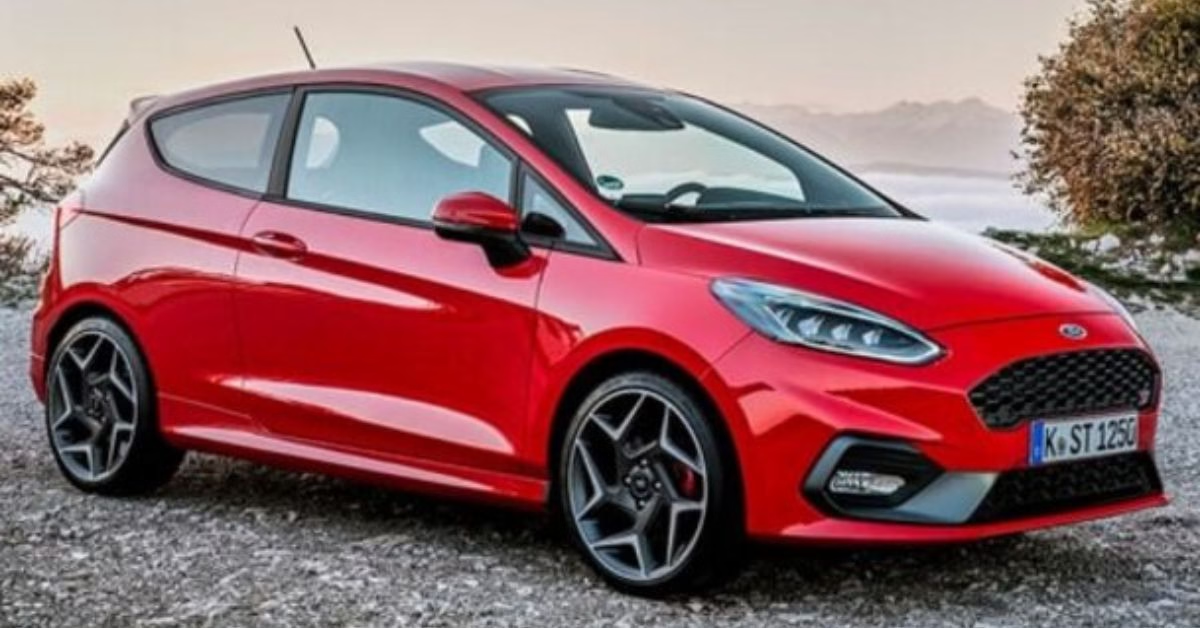
The Ford Fiesta is one of the UK’s best-selling cars — and in lower-powered trims like the Style or Trend, it’s surprisingly affordable to insure. These variants often fall into Insurance Groups 2 or 3, especially when equipped with Ford’s naturally aspirated 1.1-litre engine. This makes the Fiesta a sweet spot between practicality, quality, and budget-friendly ownership for new drivers.
Despite being slightly larger than many group 1–2 cars, the Fiesta’s handling remains its standout trait. The 1.1L petrol engine produces 75 hp — a modest figure — but the chassis is so well-balanced that it feels lively and composed on twisty B-roads and city streets alike. The light clutch and smooth gearbox also make it ideal for learners.
It’s more spacious inside than most city cars, offering a proper five-door layout with decent rear legroom and boot space. Ford’s infotainment and safety tech (lane-keeping assist, autonomous emergency braking) are often included even in entry-level trims.

